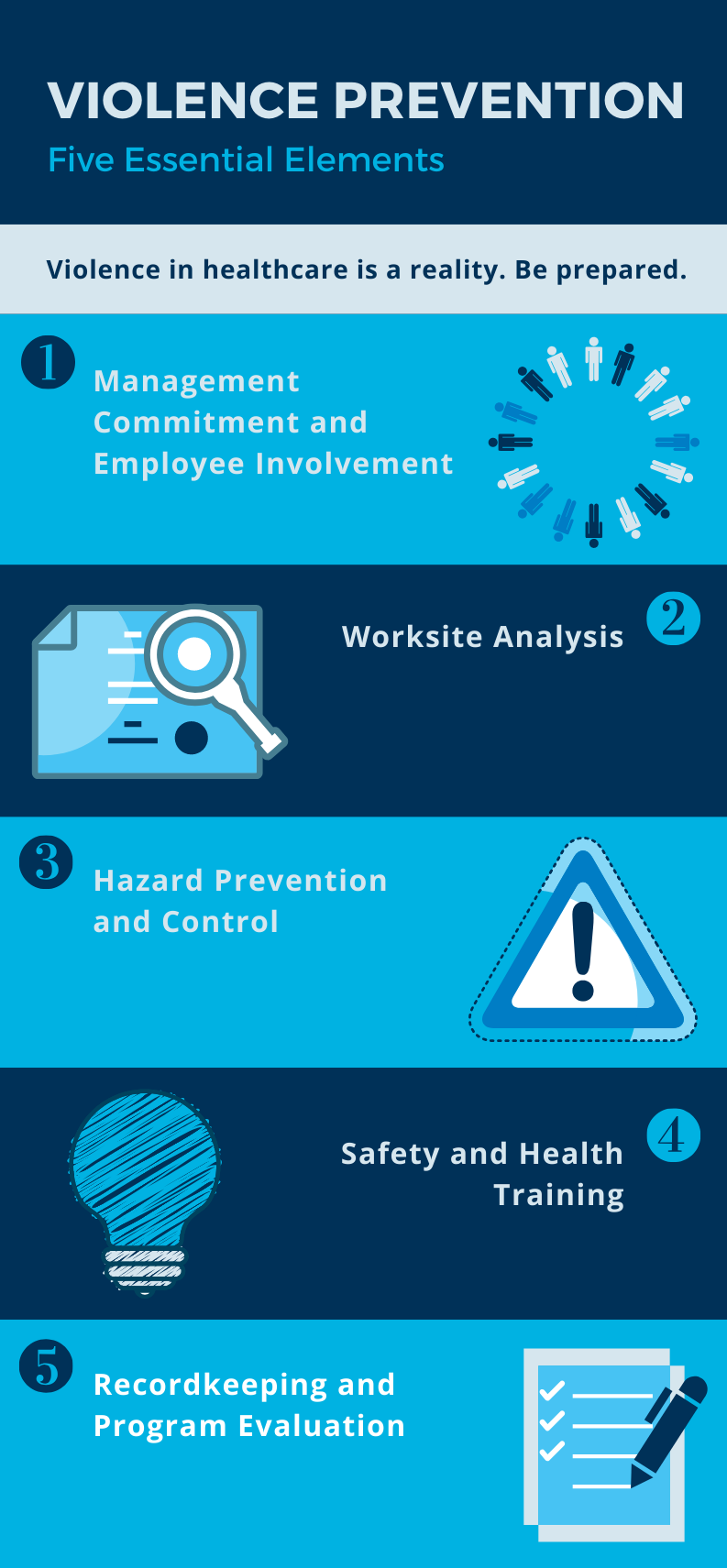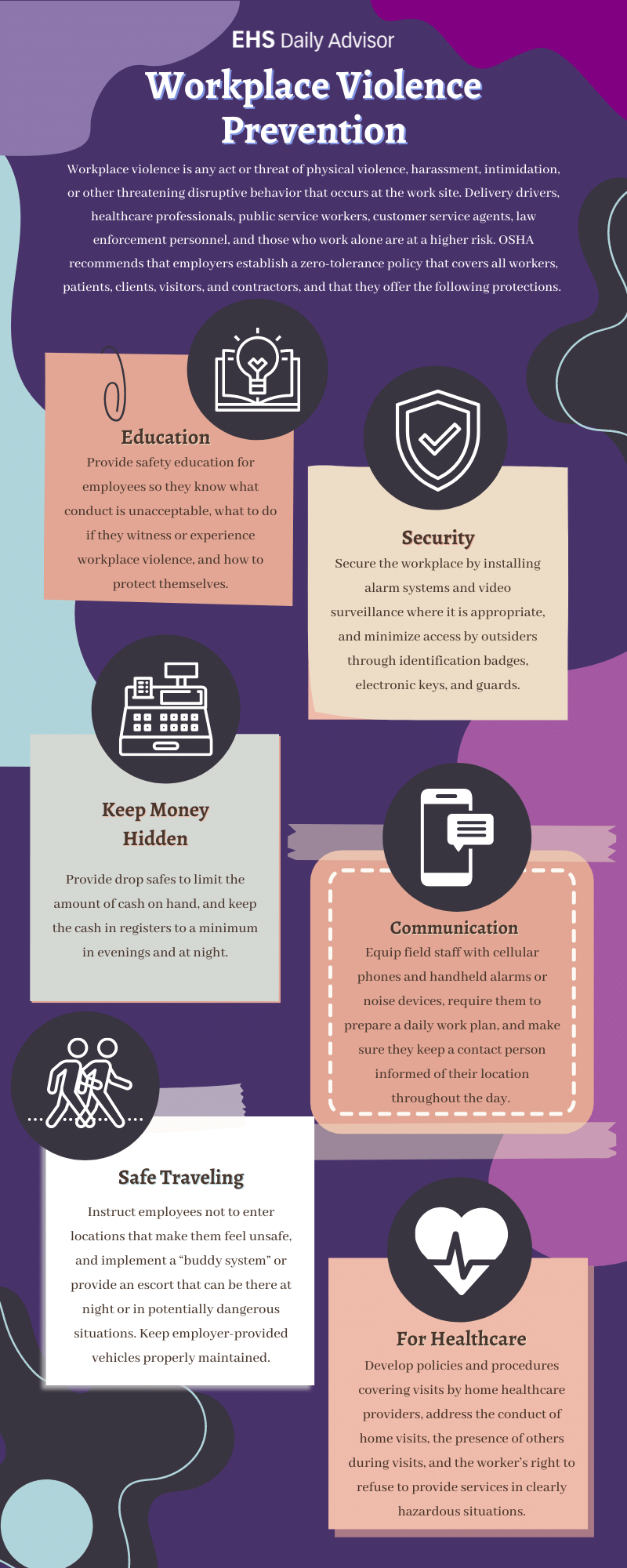Just how to Assess the Performance of Your California Workplace Violence Prevention Initiatives
Just how to Assess the Performance of Your California Workplace Violence Prevention Initiatives
Blog Article
Examining the Influence of Office Culture on the Success of Violence Prevention Initiatives and Worker Well-Being
The intersection of workplace society, physical violence prevention efforts, and employee health warrants mindful examination, as these components collectively affect organizational success. A culture that focuses on open communication and mental safety can encourage staff members to determine and report prospective threats, consequently cultivating an atmosphere helpful to both psychological wellness and efficient physical violence avoidance techniques.
Comprehending Work Environment Culture
Frequently, workplace society functions as the foundation for worker interactions and total business habits. It incorporates the common worths, beliefs, and techniques that shape the atmosphere in which workers run. A favorable work environment culture fosters collaboration, respect, and open communication, while an adverse culture may breed stress, distrust, and hostility. Recognizing workplace society is essential for organizations aiming to carry out reliable physical violence avoidance techniques.

Organizations should examine their current workplace culture to recognize locations for improvement. This analysis can include studies, emphasis teams, or one-on-one discussions. By acknowledging the social characteristics at play, organizations can carry out targeted treatments that advertise a safer and a lot more considerate job atmosphere, inevitably reducing the danger of physical violence in the workplace.
Role of Worker Health
A favorable workplace culture not only affects business habits but also significantly impacts worker wellness. When employees feel valued and appreciated, their total job fulfillment boosts, bring about enhanced emotional and mental health and wellness. This, subsequently, fosters a sense of belonging and loyalty, which is vital for long-lasting interaction and performance.
Moreover, an encouraging social setting promotes open communication, enabling employees to seek and share worries help without worry of stigma. This visibility is essential in addressing issues associated to stress and anxiety, fatigue, and interpersonal conflicts, which can adversely influence both individual well-being and business consistency.
Additionally, organizations that prioritize employee wellness typically see reduced absence and turn over rates. Healthy and balanced workers are much more resistant and better equipped to handle work environment obstacles, adding to an extra secure and efficient labor force.
Purchasing worker wellness via efforts such as health cares, mental health and wellness resources, and adaptable working setups can create a favorable feedback loophole, enhancing both private gratification and collective organizational success (california workplace violence prevention). Eventually, focusing on employee wellness is not simply an ethical imperative; it is a tactical method that profits the whole organization
Violence Prevention Strategies
Executing reliable violence prevention methods is crucial for maintaining a risk-free and healthy and balanced workplace setting. Organizations has to adopt an extensive technique that consists of plan growth, staff member training, and aggressive interaction. Developing clear workplace violence policies is the initial step, making sure that all staff members recognize appropriate behavior and the effects of violations.
Training programs ought to be made to enlighten employees concerning recognizing indication of potential violence, conflict resolution strategies, and emergency situation feedback treatments. Routine drills and simulations can enhance preparedness, cultivating a society of recognition and liability.
In addition, fostering open communication networks motivates staff members to report concerns without fear of revenge. This can be assisted in via anonymous coverage systems or routine responses sessions. Additionally, promoting a helpful office culture that values regard and inclusivity can considerably alleviate the threat of violence.
Organizations needs to also participate in regular assessments of their workplace culture and violence prevention strategies, adjusting them to evolving requirements. By focusing on these strategies, business not just shield their workers yet also boost general health, ultimately adding more to a more efficient workplace.
Gauging Social Influence
Gauging the influence of workplace society on physical violence prevention initiatives is essential for comprehending the effectiveness of current methods and identifying areas for improvement - california workplace violence prevention. To accomplish this, organizations must use a diverse strategy that incorporates qualitative and quantitative techniques. Analyses and studies can collect information on staff member perceptions of work environment security, assistance, and inclusivity systems, while case records provide concrete proof of physical violence occurrences and their context within the organizational society
In addition, emphasis groups and interviews can reveal deeper insights into employees' perspectives, ideas, and experiences surrounding violence prevention efforts. Examining this qualitative information helps organizations to identify social toughness and weaknesses that might either assist in or prevent effective prevention methods. Benchmarking against sector standards allows for comparative analysis, aiding organizations determine their performance relative to peers.

Developing Encouraging Environments
Regularly fostering a helpful environment within the workplace is vital for effective violence avoidance. Such environments equip staff members to connect freely concerning their problems and experiences, therefore determining prospective concerns prior to they escalate. A culture of assistance enhances trust fund among employee, urging partnership and aggressive problem-solving.
To create a helpful environment, organizations need to focus on training programs that focus on problem resolution, psychological knowledge, and active listening. These skills equip workers to take care of interpersonal partnerships constructively, reducing the probability of misunderstandings that could lead to violence - california workplace violence prevention. In addition, executing mentorship programs can provide workers with assistance and reassurance, adding to their overall our website health
Management plays a vital function in forming a helpful office society. By modeling compassionate habits and demonstrating a commitment to employee well-being, leaders established a tone that urges others to adhere to match. Routine feedback systems, such as anonymous surveys, can additionally aid assess worker sentiment and emphasize areas for enhancement.
Eventually, a helpful environment not just alleviates the risk of physical violence however also enhances employee spirits, job contentment, and efficiency, reinforcing the company's commitment to cultivating a successful and safe office.
Conclusion
A favorable office culture considerably influences both physical violence avoidance efforts and staff member well-being. By promoting open interaction and motivating the coverage of problems, organizations can improve mental health and wellness and job satisfaction among staff members. An encouraging society enhances the efficiency of physical violence prevention strategies by addressing and advertising the timely recognition of warning signs. Eventually, cultivating such an atmosphere offers as an essential Full Report foundation for successful interventions and adds to the general success of the organization.
The crossway of workplace culture, physical violence prevention efforts, and worker wellness warrants mindful examination, as these elements collectively affect business success. A society that focuses on open communication and emotional safety and security can equip staff members to identify and report possible risks, thereby promoting an environment conducive to both mental health and efficient physical violence avoidance strategies.A positive workplace culture not only affects business behavior but likewise substantially impacts worker wellness. Assessments and studies can collect information on staff member assumptions of work environment assistance, inclusivity, and safety and security systems, while occurrence records offer concrete proof of violence events and their context within the organizational society.
A positive workplace culture significantly affects both physical violence avoidance efforts and employee wellness.
Report this page